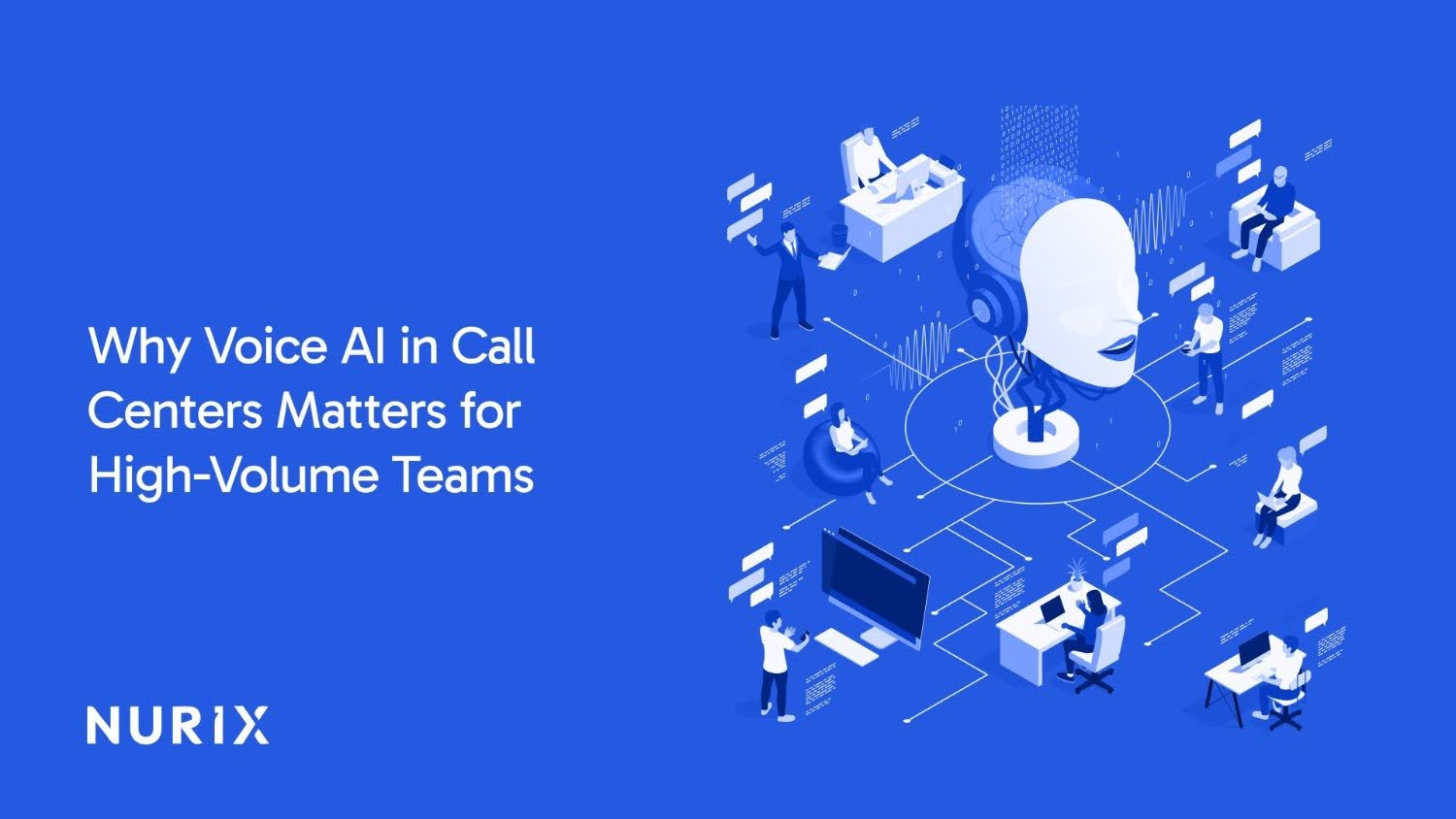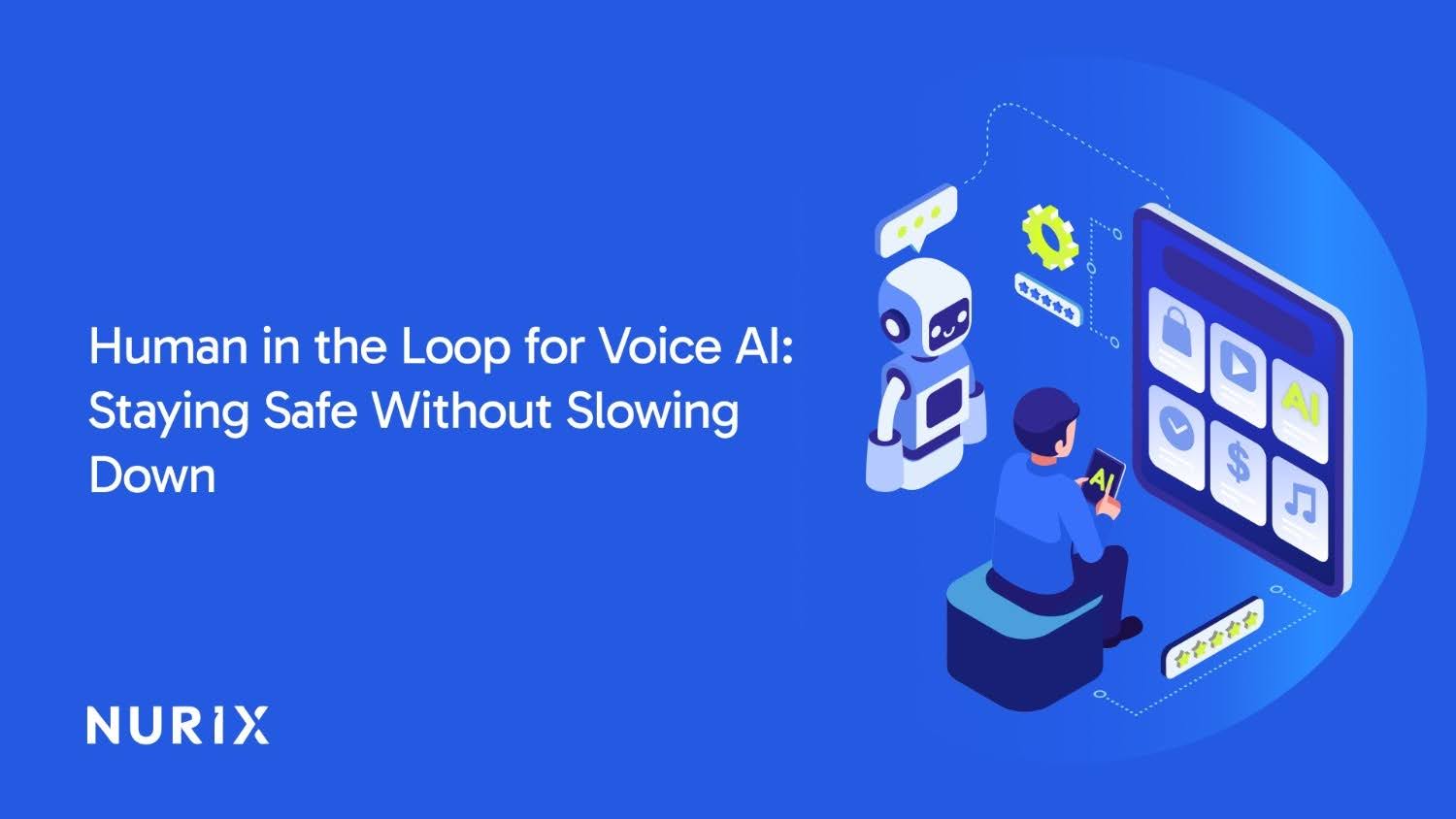Customer expectations are now higher than ever. They demand instant responses, personalized interactions, and seamless support across multiple channels for their queries, all while businesses are struggling to manage costs and maintain service quality. This is where voicebots and conversational AI are fundamentally transforming customer support systems for businesses.
Research from Juniper Networks reveals that chatbots and voicebots are projected to save businesses over $11 billion annually by 2025, up from $6 billion in 2022. Meanwhile, according to Gartner, by 2027, chatbots and voicebots will become the primary customer service channel for roughly a quarter of organizations.
In this blog, we will break down how voicebots and conversational AI are revolutionizing the entire customer service paradigm by combining natural language understanding with lightning-fast response times.
At a glance:
- Conversational AI and voicebots enable machines to understand and respond to human language using NLP and machine learning.
- They offer 24/7 assistance, reduce wait times, and automate routine tasks while escalating complex issues.
- Voicebots boost customer satisfaction, cut costs, and increase agent productivity, handling multiple conversations and offering multilingual support.
- Voicebots are voice-only, while voice chatbots combine both voice and text inputs.
- Key challenges include system integration, data security, and voicebot training.
What is Voicebot and Conversational AI?
Conversational AI represents the broader technology ecosystem that enables machines to understand, process, and respond to human language in contextually appropriate ways. It encompasses natural language processing, machine learning, and speech technologies that work in concert to create fluid, intelligent interactions across voice and text channels.
A voicebot is an AI-powered virtual assistant that interacts with customers through spoken language, understanding queries, processing information, and delivering relevant responses, all without human intervention.
Unlike traditional IVR (Interactive Voice Response) systems that rely on rigid menu structures and touch-tone inputs, voicebots leverage conversational AI to engage in natural, human-like dialogues.
But how do these voicebots actually deliver that seamless experience?
The Technology Behind Voicebots
The technology operates through interconnected components that process conversations in real-time:
Speech-to-Text (ASR)
ASR, or Automatic Speech Recognition, acts as the voicebot’s ears, converting spoken words into text. It uses deep learning models trained on vast amounts of audio data to accurately transcribe speech across accents, dialects, and varying speeds.
Advanced ASR can handle background noise and overlapping speech and adapt to individual speaking patterns over time.
Natural Language Processing (NLP)
After converting speech to text, NLP extracts meaning by breaking down sentences and identifying key entities, such as names and dates. It comprehends not just the words, but their intent, distinguishing phrases like "I want to cancel" versus "I want to cancel my appointment."
Intent Detection
Intent detection identifies the customer's desired action, such as checking an order or requesting a refund. Modern systems can detect multiple intents in a single interaction and manage multi-turn conversations, ensuring accurate routing to the proper workflow.
Response Generation
Once the bot understands the request, it generates a relevant, context-aware response. By accessing databases and applying business logic, advanced systems use neural language models to craft replies that sound natural and conversational, moving beyond scripted templates.
Text-to-Speech (TTS)
TTS converts the response back into natural-sounding speech, adjusting tone based on context, whether apologetic or enthusiastic. Using neural networks, high-quality TTS mimics human intonation and emotional expression, making interactions feel lifelike.
Machine Learning
These systems continuously improve through exposure to real conversations. Machine learning models identify patterns in customer behavior, adapt responses, and optimize interactions over time. Reinforcement learning enhances conversation flow, while transfer learning allows voicebots to adapt to new domains quickly.
Now that we know how voicebots function on a technical level, let’s take a look at their tangible impact on business outcomes.
Also Read: Top Conversational AI Leaders for 2025
The Real ROI of Voicebot and Conversational AI
The return on investment from voicebot implementation impacts multiple areas that directly boost the bottom line:
- Customer Satisfaction: Voicebots eliminate long hold times and repetitive authentication, providing instant solutions to common issues. Customers report satisfaction levels comparable to or higher than traditional support channels, especially for quick, straightforward queries.
- Agent Productivity: By handling routine tasks such as password resets and order tracking, voicebots enable agents to focus on complex issues. This increases agent productivity by 30-40%, as agents spend more time on high-value interactions.
- Call Volume Reduction: Voicebots resolve 60-80% of common inquiries without escalation, easing agent workload and reducing call center costs. This leads to lower staffing needs, reduced telecom expenses, and scalable support without added headcount.
- Average Handle Time (AHT): Voicebots collect customer data and route queries to the right specialist, reducing AHT by 20-30%. This enables contact centers to manage higher call volumes with existing resources.
- Reduced Training Costs: Voicebots eliminate traditional training costs. They don't require onboarding and instantly update with policy changes, ensuring every customer interaction reflects the latest information.
- First-Call Resolution: Voicebots provide accurate, consistent responses, improving first-call resolution by 15-25%. They reduce the need for follow-ups, eliminating callback cycles and improving efficiency.
- Compliance & Quality Consistency: Voicebots follow compliance protocols precisely, reducing human error and ensuring regulatory adherence in industries like healthcare, finance, and insurance.
- Data Collection & Analytics: Voicebots capture and structure every interaction, providing valuable data that drives predictive analytics, identifies emerging issues, and informs strategic decisions.
- Reduced Staff Turnover: By automating repetitive tasks, voicebots allow agents to focus on more engaging work, improving job satisfaction and reducing turnover, saving recruitment and training costs.
As we've seen, the technology delivers significant ROI. But it's not just about cost savings; voicebots are reshaping how businesses engage with customers.
Benefits of Voicebots in Customer Support
Voicebots offer practical advantages that transform customer support for both businesses and their customers. Here’s how:
1. 24/7 Availability
Voicebots provide round-the-clock support without overtime or shift management. Whether a customer calls at midnight or during a holiday, they get immediate help, perfect for global businesses with customers across time zones.
2. Cost Reduction
Voicebots are far more cost-effective than human agents. They handle unlimited simultaneous conversations at a fraction of the cost, resulting in a 25-35% reduction in customer service operational costs within the first year. These savings result from lower staffing requirements, lower training costs, and reduced infrastructure needs.
3. Reduced Wait Times
Voicebots eliminate the frustration of long hold times by handling multiple conversations simultaneously. Customers get immediate responses, even during peak periods, without waiting in line or hearing “higher than normal call volume” messages.
4. Improved Customer Satisfaction
Quick and consistent service directly boosts satisfaction. Voicebots provide accurate, immediate responses every time, ensuring no bad days or mood variations. Customers appreciate reliable, fast support that improves overall satisfaction scores.
5. Scalability
Voicebots scale exponentially. What handles 100 conversations can easily manage 10,000, all without any loss in performance. This scalability helps businesses handle seasonal spikes, product launches, and unexpected surges without needing to hire and train temporary staff.
6. Enhanced Agent Productivity
With voicebots handling routine tasks, agents focus on more complex issues that require problem-solving and relationship-building. This shift improves agent satisfaction, reduces turnover, and leads to better outcomes for customers with complex needs.
7. Multilingual Support
Deploying multilingual human agents is expensive and difficult to manage. Voicebots, however, can instantly switch between languages, providing seamless support in multiple languages without extra cost, allowing businesses to serve global markets more efficiently.
8. Consistency in Service Delivery
Voicebots offer uniform service every time. Unlike human agents, who may vary based on experience or mood, voicebots deliver accurate information, professional service, and consistent adherence to brand guidelines across all interactions.
9. Personalized Interactions
Voicebots can create personalized experiences by using customer history, preferences, and past interactions. They greet returning customers by name, refer to previous conversations, and offer tailored recommendations, creating a seamless, human-like experience that customers appreciate.
While the benefits are clear, it's also essential to understand the differences between voicebots and voice chatbots, as their functionalities and applications vary.
Also Read: AI Chatbot for Ecommerce Customer Service Automation
Differences Between Voicebots and Voice Chatbots
While often used interchangeably, voicebots and voice chatbots have distinct characteristics that make them suitable for different applications.
Here’s the difference between them:
Understanding these differences gives us a clearer view of how businesses can use voicebots most effectively. But technology alone isn't enough. So, what makes a voicebot truly effective?
What Makes Voicebots Effective?
Not all voicebots are created equal. The most effective systems share key capabilities that set them apart from the rest.
- Natural Language Understanding (NLU): Top-tier voicebots go beyond basic speech recognition. They use advanced NLU to understand context, handle ambiguity, and recognize conversational nuances. For example, "I need help with my account" can mean billing questions, access issues, or account closure, depending on the context and follow-up.
- Sentiment Analysis: Effective voicebots can detect customer emotions, frustration, confusion, or satisfaction, and adjust their responses. If they sense rising frustration, they can proactively offer a human handover before the customer explicitly asks.
- Personalization: The best voicebots use customer data to create tailored experiences, acknowledging loyalty status, referencing past purchases, or anticipating needs based on behavior. This personalization turns routine interactions into opportunities for relationship-building.
- Seamless Handover to Human Agents: Voicebots shouldn’t handle everything. Great systems recognize their limits and smoothly transfer customers to human agents when needed, passing along full context so the customer doesn’t have to repeat themselves. This ability directly impacts customer satisfaction.
- CRM Integration: Voicebots that integrate with CRM systems can access customer data, log interactions, and update records in real-time. This ensures consistency across channels and provides valuable data for business insights.
- Proactive Assistance: Advanced voicebots anticipate customer needs. They can notify customers about order delays, remind them of appointments, or suggest products based on past behavior, shifting from reactive to proactive service.
- Voice Biometrics/Authentication: Voice biometrics provide secure yet effortless authentication. Instead of tedious security questions, voicebots verify identity using speech patterns, improving both security and user experience.
- Multilingual Capabilities: Effective voicebots don’t just speak multiple languages. They understand cultural nuances, idioms, and regional variations. This ensures smooth, natural conversations with customers from diverse backgrounds.
The technology is powerful, but like any solution, there are challenges and considerations that businesses must address to ensure a successful implementation.
Challenges in Implementing Voicebot and Conversational AI for Customer Support
Despite their impressive capabilities, voicebot implementations aren't without challenges. Understanding these obstacles helps organizations prepare for successful deployments.
- Integration Requirements: Connecting voicebots with existing systems, CRMs, and payment processors can be complex, especially with legacy infrastructure. Clear integration strategies and potentially middleware or API development are necessary.
- Data Security & Compliance: Voice interactions involve sensitive data, requiring strong security measures and adherence to regulations like GDPR, CCPA, and PCI-DSS. Secure storage, encryption, and retention of voice data are essential.
- Language Input Challenges: Accents, background noise, and connection issues can affect voice recognition accuracy. Organizations must balance precision with user experience, using fallback mechanisms when needed.
- User Apprehension: Some customers prefer human interaction. Successful voicebot implementations address this by clearly communicating capabilities, offering easy paths to human agents, and demonstrating value through positive experiences.
- Training Requirements: While voicebots reduce agent training, they need ongoing training with diverse conversation examples to refine intent detection and improve responses, requiring dedicated resources.
- Scalability Considerations: Voicebots scale better than humans but still require planning for rapid growth, ensuring adequate computing resources and system capacity to handle peak periods.
While the road to implementing voicebots may have its hurdles, the potential for transformative customer support remains high. The next step is integrating these solutions in a way that aligns with your goals and operational needs.
Also Read: Creating a Conversational AI Voice-Based Chatbot: Differences and Benefits
Transform Your Customer Support with AI-Powered Voice Solutions
Customer support teams struggle with increasing call volumes, rising customer expectations, and managing multi-channel support while controlling costs. Businesses need efficient, scalable solutions that deliver fast, personalized service without compromising quality.
Nurix AI provides an AI-powered voicebot platform that integrates seamlessly into your systems to streamline support operations, boost agent productivity, and reduce costs.
Here’s what we offer:
- AI Agent Assist: Helps teams make real-time decisions and handle queries, boosting productivity.
- AI-Driven Customer Engagement: Resolves queries and recommends products with minimal human intervention.
- Automated Data Analysis & Workflow Management: Delivers actionable insights to optimize decisions and drive conversions.
- Multilingual Support: Offers seamless service in over 50 languages.
- Voice AI with Biometric Authentication: Ensures secure, personalized interactions with voice recognition.
- Retrieval-Augmented Generation (RAG): Provides accurate, context-aware responses.
- Advanced LLM Integration: Utilizes GPT-4, Claude, and custom models for high-quality interactions.
- Omnichannel Integration: Integrates voice, text, and email support into a secure, cohesive experience.
- End-to-End Encryption: Protects data at every stage of interaction.
- Multi-Factor Authentication: Adds an extra layer of security.
- Compliance: Meets global regulations like GDPR, PCI-DSS, and CCPA.
- MLOps: Continuously retrain models for improved performance.
Ready to transform your customer support? Schedule a demo with Nurix AI and see how our solution can enhance efficiency, satisfaction, and cost savings.










